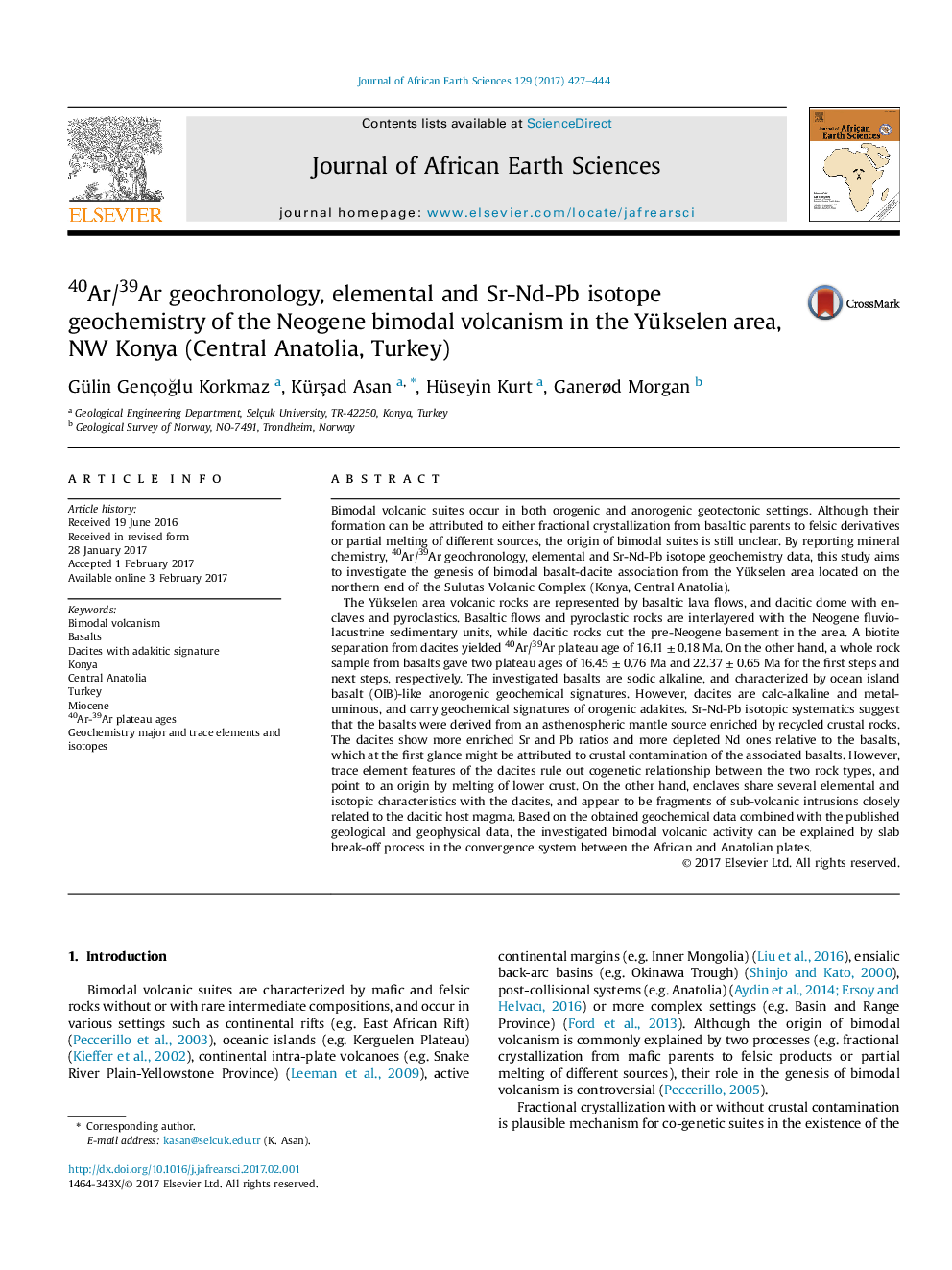| کد مقاله | کد نشریه | سال انتشار | مقاله انگلیسی | نسخه تمام متن |
|---|---|---|---|---|
| 5785706 | 1640179 | 2017 | 18 صفحه PDF | دانلود رایگان |

- Neogene volcanism in the Yükselen area (NW Konya, Central Anatolia) is an example of the bimodal basalt-dacite association.
- Basalts are characterized by ocean island basalt (OIB)-like anorogenic geochemical signatures, but dacites carry geochemical signatures of orogenic adakites.
- Basalts were derived from an asthenospheric mantle source, but dacites from mafic lower crust.
- Bimodal volcanic activity can be explained by slab break-off process in the convergence system between the African and Anatolian plates.
- 40Ar/39Ar geochronology represents the oldest ages (ca. 16-22 Ma), suggestive of south-southwest younging age progression in the Konya region.
Bimodal volcanic suites occur in both orogenic and anorogenic geotectonic settings. Although their formation can be attributed to either fractional crystallization from basaltic parents to felsic derivatives or partial melting of different sources, the origin of bimodal suites is still unclear. By reporting mineral chemistry, 40Ar/39Ar geochronology, elemental and Sr-Nd-Pb isotope geochemistry data, this study aims to investigate the genesis of bimodal basalt-dacite association from the Yükselen area located on the northern end of the Sulutas Volcanic Complex (Konya, Central Anatolia).The Yükselen area volcanic rocks are represented by basaltic lava flows, and dacitic dome with enclaves and pyroclastics. Basaltic flows and pyroclastic rocks are interlayered with the Neogene fluvio-lacustrine sedimentary units, while dacitic rocks cut the pre-Neogene basement in the area. A biotite separation from dacites yielded 40Ar/39Ar plateau age of 16.11 ± 0.18 Ma. On the other hand, a whole rock sample from basalts gave two plateau ages of 16.45 ± 0.76 Ma and 22.37 ± 0.65 Ma for the first steps and next steps, respectively. The investigated basalts are sodic alkaline, and characterized by ocean island basalt (OIB)-like anorogenic geochemical signatures. However, dacites are calc-alkaline and metaluminous, and carry geochemical signatures of orogenic adakites. Sr-Nd-Pb isotopic systematics suggest that the basalts were derived from an asthenospheric mantle source enriched by recycled crustal rocks. The dacites show more enriched Sr and Pb ratios and more depleted Nd ones relative to the basalts, which at the first glance might be attributed to crustal contamination of the associated basalts. However, trace element features of the dacites rule out cogenetic relationship between the two rock types, and point to an origin by melting of lower crust. On the other hand, enclaves share several elemental and isotopic characteristics with the dacites, and appear to be fragments of sub-volcanic intrusions closely related to the dacitic host magma. Based on the obtained geochemical data combined with the published geological and geophysical data, the investigated bimodal volcanic activity can be explained by slab break-off process in the convergence system between the African and Anatolian plates.
Journal: Journal of African Earth Sciences - Volume 129, May 2017, Pages 427-444